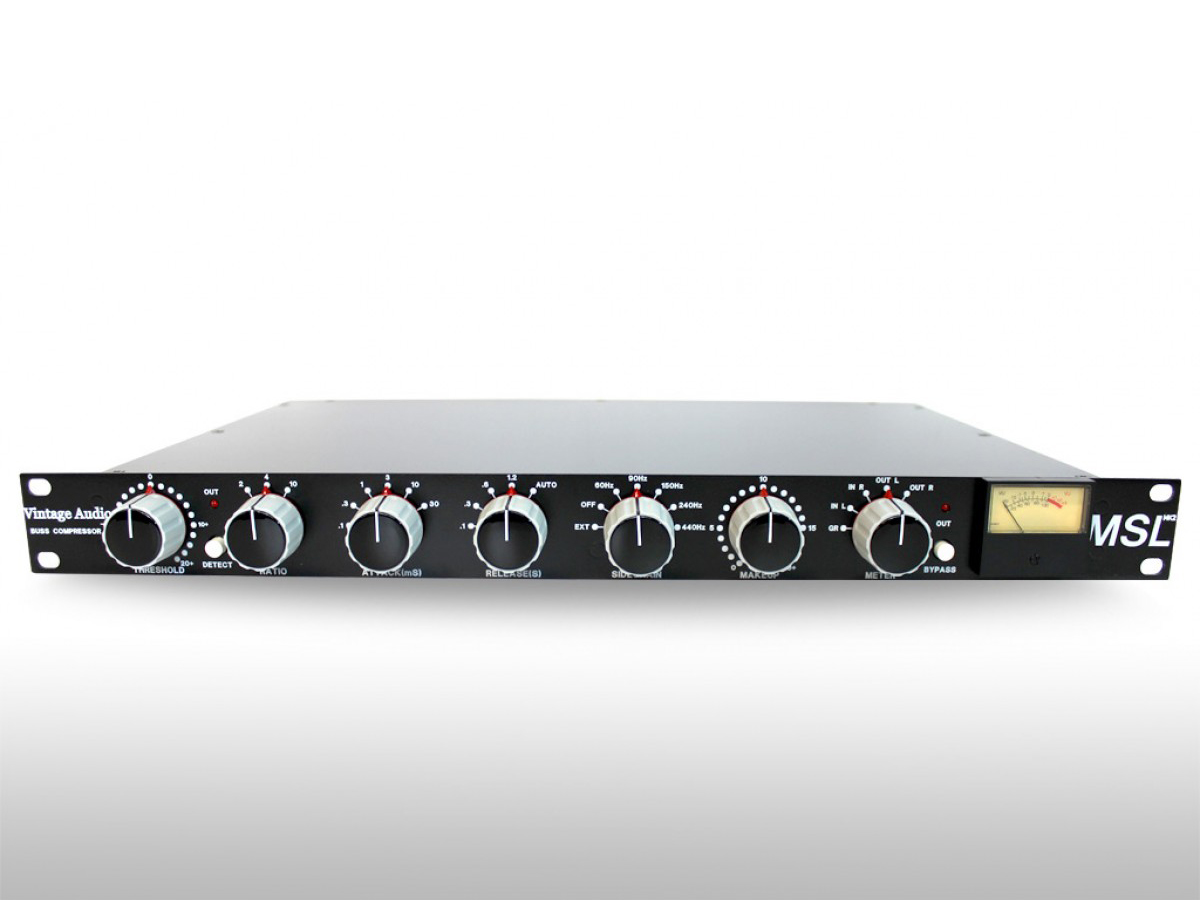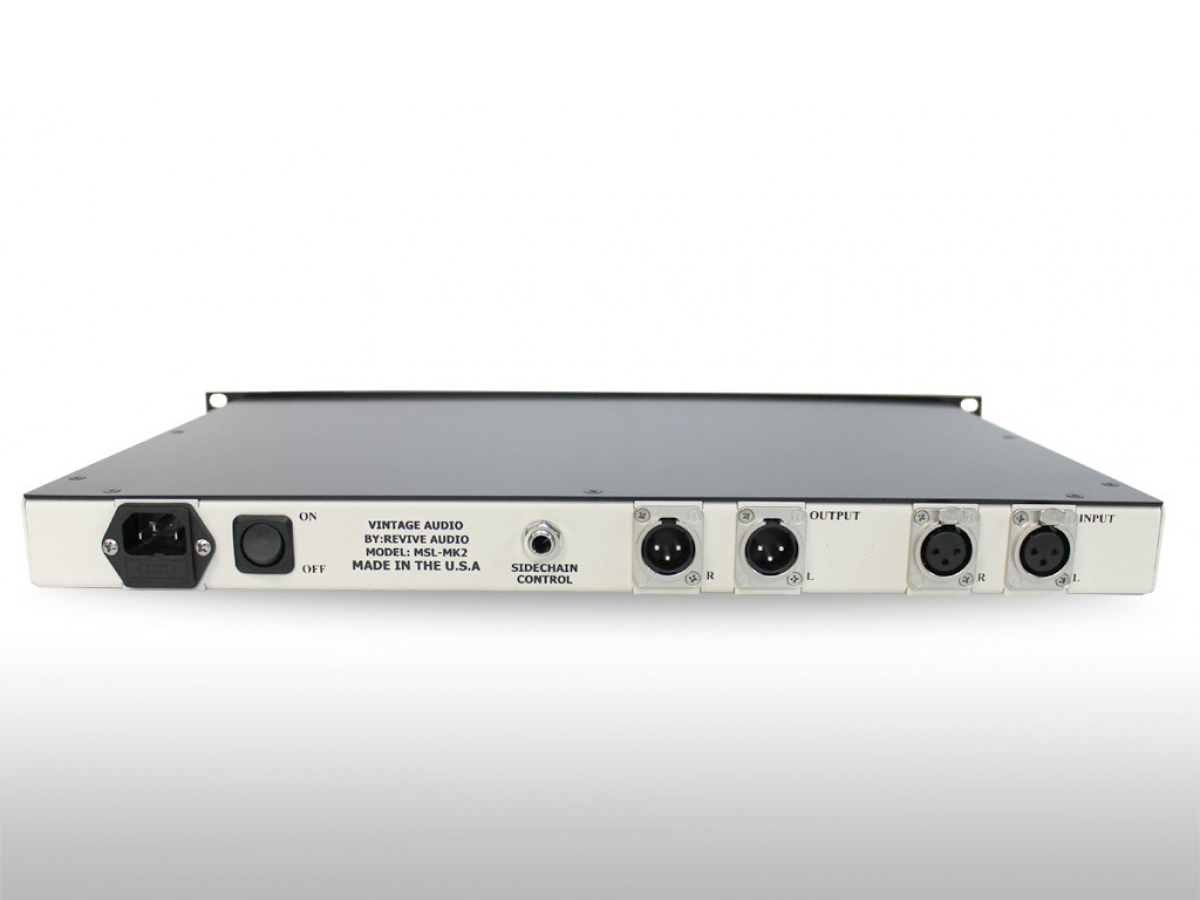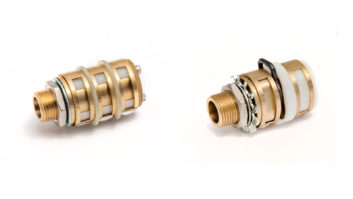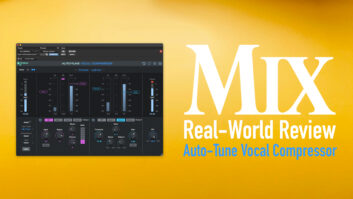Have I ever mentioned what a wonderful time it is to be an audio engineer? Maybe a thousand times. But it is a great time, filled with amazing new plug-ins, digital conveniences, active monitors, great new gear designs, smart modifications readily available, boutique creations, falling prices and more. Take those last three items—mods, hand-made gear and affordability—and you’ve got the raison d’être of Revive Audio in Caldwell, ID. There, Jason Lambson modifies gear, smartly improving upon the power supplies, transformers and components of both new and old gear, as well as designing new versions of old classics which are put together with carefully selected parts and modern insights.
I got wind of Revive Audio’s line of mic preamps and processors a while ago, but was especially drawn to their $1,049 MSL-Mk2, a two-channel VCA-based compressor designed especially for stereo-bus use, designed with the cleanliness, glue and punch of a certain classic SSL two-bus comp, but without being a knockoff. The components chosen attest to the overall build quality: four “A-rated” VCAs (two per channel, but switchable), Burr-Brown op-amps, Canare cabling, Neutrik connectors, Vishay/Dale resistors and Panasonic/Wima/Vishay capacitors. The units are hand-wired and assembled on a custom PCB, carrying a confidence-boosting three-year warranty.
In a space-saving, 1 RU design, Revive uses one set of controls for both channels, including a threshold control, a ratio selector (2, 4 or 10 to 1 only), a seven-position attack control (as quick as 0.1 ms), a five-position release control (with an auto mode), a sidechain filter selector (HPF of 60, 90, 150, 240, 440 Hz, external or none), a relay-switched true bypass and up to +20 dB of makeup gain. A single VU meter shows gain reduction, or level at any one input/output.

The transformerless unit as tested here uses dual detectors and dual VCAs (per channel), for an inherently clean and transparent sound, although via the Detector-out switch, you can use only a single detector per channel, forcing the tone into saturation, aggressive attack and numerous creative possibilities.
I popped the MSL-Mk2 into my rack no problem (no external power supplies, no cooling vents … nice) and got to work. First off, I had to hit it with some basic-track rough mixes, and I immediately felt that familiar and desirable glue, cohesion and punch brought to the mixes. This was nothing fancy, everyday stuff—2:1, slightly slowed attack, auto release, sidechain HPF at 240 and just a little makeup gain. I did find the threshold to be a lot grabbier than I expected and it required careful setting, especially for only 2:1 and slow-ish attack. I also found the 440 Hz sidechain setting to be less useful than expected and kind of lunge-y in response. The auto release setting was also a little slower than I hoped for and not as responsive as I needed on fast and medium tempos.
Related: Review: UK Sound 1173 Mic Pre Compressor, by Rob Tavaglione, Jan. 31, 2019
However, once I dialed in my perfect setting, it seemed to be this one-size-fits-all, nearly universal mix bus setting that would work well on almost anything. Quite transparent, quite subtle, yet quite profound; this neutral setting seemed to enhance punch while containing dynamics and otherwise remaining invisible. All I had to do was fine-tune threshold and output level from song to song as I mixed the week’s work (rock, pop, country, rap and Americana). With repeated mix use, I also did find myself sometimes choosing that auto release setting to prevent pumping.
A stereo comp like the MSL-Mk2 is a natural choice for nice, big, stereo pictures like drum overheads, acoustic guitar and piano, and it performed as expected. Drum overheads were a great fit, with genteel, clean containment and settings not unlike my mix settings. I ran through some creative options like higher ratios (4:1 is excellent, not unlike a UA 1176, while 10:1 was pretty grabby, better suited to room mics), various sidechain settings (low settings can really grab the whole kit and that 440 setting was cool in a pumpy kind of way) and release options, too. I tried the Detector-out option, and while it wasn’t right for many recordings, it was going to be right for something, with a nicely saturated, not quite distorted, sort off growly thing going on—a thing perhaps better suited to a track or subgroup if not the whole mix (kind of like all-buttons-in on an 1176).

Even though the MSL is meant for mix work, that doesn’t mean you can’t use it on a mono source. You could use it on two different mono sources at once, but they’d be sharing settings. The MSL did a nice job on snare and kick, with some pretty usable tones at 4:1 and 10:1 if you put some effort into tweaking attack time, release and the sidechain filter. Bass guitar and mono synths take a nice MSL squeeze as well, either clean and quick or with Detector-out and nastied up for some parallel processing. For that matter, you can do anything with the MSL that you can do with a nice, clean, fast VCA compressor, like vocals, percussion, string instruments, subgroups.
About the only things I missed with the MSL-Mk2 are space related (one RU doesn’t offer a whole lot of real estate to work with), as I wished for an additional VU meter and an output balance control or fine-trim pots in order to get left and right channel output perfectly matched. I managed to get by without either and otherwise have no complaints, which is pretty rare for this picky reviewer.
Want more stories like this? Subscribe to our newsletter and get it delivered right to your inbox.
The MSL really is very good at mix compression, where it does punchy, clean and powerful work without any muss or fuss. If you are looking for a little more character and less neutrality, Revive also makes the MSL-TX; at $1,349, the MSL-TX offers switchable Cinemag transformers (laminates at input and steel-core at output for numerous tonal options) and more headroom. Either way, you’re looking at top-shelf compression performance at about half the price that is typical for such quality.
Revive Audio • www.reviveaudio.com







